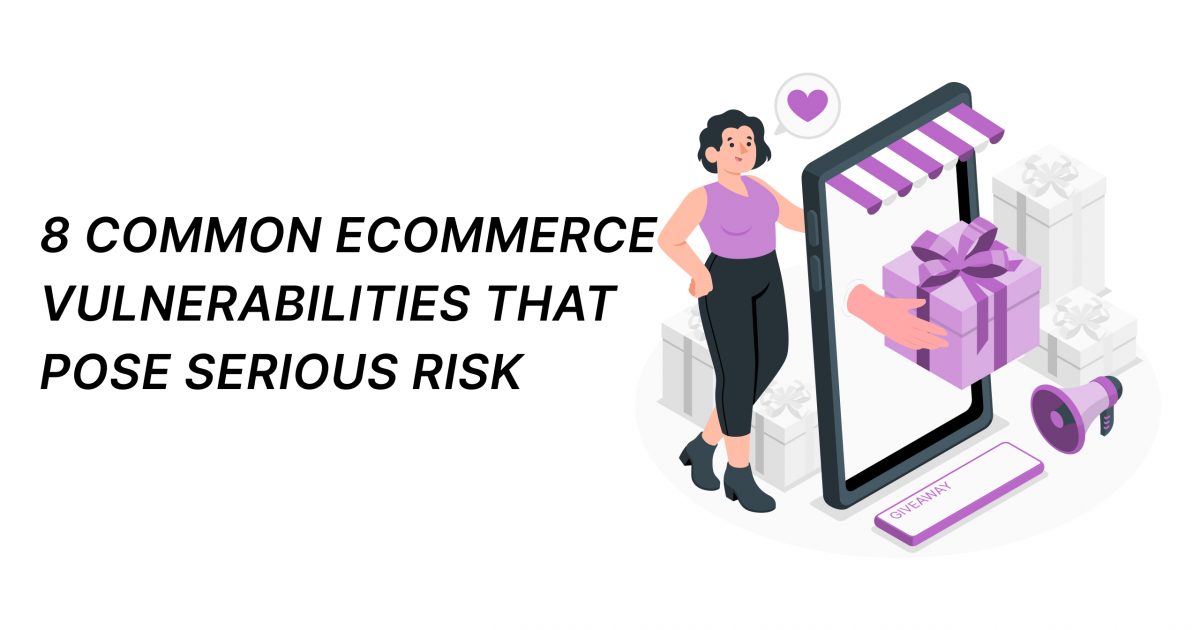As the growth of eCommerce businesses continues to surge, there is also a pressing need for solid security measures.
Research suggests that eCommerce businesses can face losses of up to 48 billion dollars as a result of security breaches and vulnerabilities.
Such eCommerce Security vulnerabilities can leave a trail of damage for online stores.
It can diminish customer trust and have a negative impact on revenue.
What are these vulnerabilities that pose a serious risk for eCommerce stores? Let’s have a look.
Common eCommerce Vulnerabilities that Pose Serious Risks
In the context of eCommerce, a security threat refers to the weak points in the system that can be exploited by scammers to gain unauthorised access, exploit customer data, and personal information, and commit financial fraud. Some major types of eCommerce threats include
- Phishing
This type of attack is aimed at obtaining sensitive information such as usernames and passwords of customers. Hackers often adopt the tactic of impersonating a legitimate business and sending emails and messages to consumers.
In most cases, these emails and messages contain information, logos, and links to pages similar to a real eCommerce website to gain trust. They either extract financial information and passwords from the victims or prompt the user to make purchases from such sites where the payment gets deducted from their accounts but no product is delivered.
- DDoS Attack
Denial of Service attacks are used to crash a web server by overwhelming it with the traffic that comes from compromised devices. This can ultimately slow down the website and make it inaccessible for some time. It can drastically decrease traffic and negatively impact sales and revenue.
DDoS attacks can be determined by excessive spam emails, slow access to files and internet discussions. Many times it’s difficult to even detect the symptoms of a DDoS attack without professional tools.
- Malware
Malicious software is those that hackers install into your management software or IT devices without your knowledge through spam links and random clicks. Software like Spyware, Trojan viruses, or ransomware can delete your important files such as consumer details, orders, and inventories.
Such an attack can disrupt all your processes and prevent you from accessing critical systems. Removal of malware is also costly so it’s best to avoid such attacks by using powerful antivirus and anti-malware software. Update the anti-malware software regularly to detect and address vulnerabilities from malware.
- Man in the Middle
This type of attack is where a third party listens in during a conversation or data transfer between two parties. Hackers inject malicious software into the files exchanged and the unauthorised access allows them to intercept communications and even modify what each party is saying.
It can cause miscommunication between the customer and the eCommerce company and even enable them to gather sensitive information that allows them to place fraudulent orders without making payment.
- Spamming
eCommerce stores rely significantly on emails for sending out important order updates, the latest offers, and order confirmations. However, while emails are critical to an eCommerce marketing strategy, they’re also a medium hackers use for executing spam attacks.
Hackers send numerous messages containing infected links through emails and other channels, that will direct users to a malicious website or encourage downloads of malicious files or bugs that may expose your sensitive information. This is also a common practice in eCommerce website blog comment sections.
- Brute Force Attacks
This is a less sophisticated method of attack as compared to other forms of attacks mentioned here but it can still be a hassle for eCommerce brands if they’re not careful with their login information.
Here, attackers use special tools to try different usernames and password combinations until they can get access to your website and manipulate customer data, orders, etc. As a precautionary measure, eCommerce websites need to have strong login credentials that are difficult to decipher and also have a two-factor authentication login system.
- Cross-site Scripting and SQL Injection
Hackers can also exploit existing vulnerabilities on your eCommerce site using cross-site scripting and SQL injections. Cross-site scripting is when a hacker inserts malicious JavaScript code into your site that gives them access to your consumers’ cookies, session tokens, and other sensitive information stored on the target’s device.
SQL injections affect your database by injecting codes that are put into the query boxes and data submission forms on your site. By inserting such code, hackers can bypass an authentication page and get access to the back-end database. To avoid such attacks, eCommerce sites need to use secure coding practices like input validation and output encoding.
- Bot Attacks
Bots are applications designed to carry out malicious activities on eCommerce websites. They can conduct various attacks as mentioned above like DDoS and spamming. Some bots are also designed to crawl your website to gather information about your inventory and prices, automate purchases, scrape data, cause financial fraud, and launch attacks.
It can also modify them to disrupt the customer experience, a decline in sales, and revenue. To avoid bot attacks, sites usually introduce CAPTCHA for critical actions such as logging in and purchasing products.
Wrapping Up
Understanding the top security vulnerabilities and how they threaten an eCommerce website can be the first step towards taking security measures to mitigate these risks.
As eCommerce businesses continue to grow, being on the lookout for vulnerabilities that can hamper customer trust, brand loyalty, and financial stability can save you from the hassle of addressing such attacks in the future and enable you to safeguard your brand from common threats.


